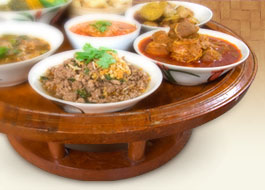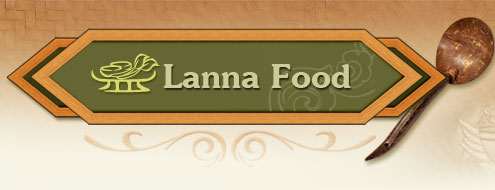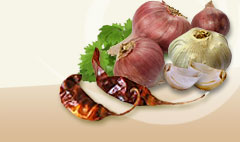Vietnamese mint |
|
|
 | Polygonum Odoratum Lour. |
|
| |
 | Polygonaceae |
|
| |
 | Knotwood, Vietnamese mint |
|
| |
 | Phak phai (Northern), hom chan (Ayutthaya) (Rattana Phromphichai, 1999, p. 4147); phrik pa (Central), chan daeng (Nakhon Si Thammarat); Phak phraeo (Kanchana Diwiset, et al. 2005, p. 127) |
|
| |
 | Annual plant, 30-35 cm high, creeping, stem furrowed; adventitious roots at the nodes. Leaves alternate, lancelot, alternate at the base in a short petiole, 2.5-3 cm. wide , 5.5-8 cm long. Inflorescence long slinder spikes, white or purplish-pink. Fruit very small (Kanchana Diwiset, et al., 2005, p. 127). |
|
| |
 |

Phosphorus, calcium, iron, Vitamins B1, B2 and C as well as niacin. (Phak Phuen Ban Ahan Phuen Mueang, 2007, 59). The roots and leaves are eaten raw with lap, lu and yam of all kinds, (e.g. yam chin, yam kop) (Rattana Phromphichai, 1999, p. 4147; Prathan Nanchaisin, personal communication, July 3, 2007) |

The plant enhances appetite and relieves gas in the stomach. Leaf extract is mixed with alcohol to treat ringworm or rashes. (Kanchana Diwiset, et al., 2005, p. 127) |
|
| |
 | All year round |
|
| |
 |
Kanchana Diwiset, et. al., Compiler (2005). Phak Phuen Ban Phak Nuea. Phennapha Sapcharoen, Editor. (2nd ed). Nonthaburi: Center for Text Development on Traditional Thai Medicine. (in thai). Phak Phuen Ban Ahan Phuen Mueang. (2007). Bangkok: Fa Aphai Co., Ltd.. (in thai). Rattana Phromphichai. (1999). Phai, Phak. InSaranukrom Wattanathamthai Phak Nuea (Vol.8,p.4717). Bangkok: The Siam Commercial Bank Foundation for the Encyclopedia of Thai Culture. (in thai). |
|
| |
|
|




